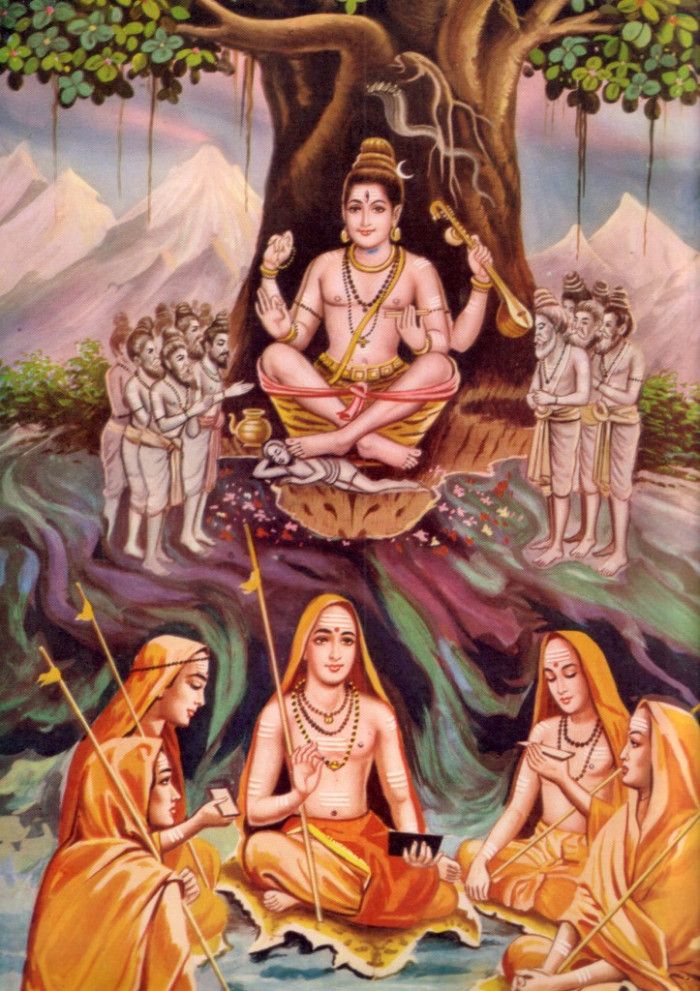SADHANA PANCAKAM
Part III
In the previous articles meaning of the first two slokas of Sadhana panckam was given in detail. In the present Part 3 of the article, the third sloka of Sadhana Pancakam meaning is given in detail.
Each sloka has four padas and each pada has two simple phrases of dos and don’ts.
Sloka 3:
vakyarthasca vicaryatam srutisirah paksah samasriyatam
dustarkatsuviramyatam srutimatastarko nusandhiyatam |
brahmasmiti vibhavyatamaharahargarvah parityajyatam
dehe hammatirujhyatam budhajanairvadah parityajyatam || 3 ||
वाक्यार्थश्च विचार्यतां श्रुतिशिरः पक्षः समाश्रीयतां
दुस्तर्कात्सुविरम्यतां श्रुतिमतस्तर्कोऽनुसन्धीयताम्।
ब्रह्मास्मीति विभाव्यतामहरहर्गर्वः परित्यज्यतां
देहेऽहंमतिरुझ्यतां बुधजनैर्वादः परित्यज्यताम् ॥ ३ ॥
C-1 vakyarthasca vicaryatam वाक्यार्थश्च विचार्यतां
Simply reading/reciting after being taught is not sufficient – one has to reflect/contemplate that brahma vakya continuously. Vidya is learnt in four stages. In the first stage, it is from information usually taught by Guru. The second stage is the contemplation of what was taught and its applicability to one’s own situation. The third stage is a discussion with Satsang – one who is of the same mentality attitude and capacity. The final stage is teaching the same as Guru parampara.
C-2 srutisirah paksah samasriyatam श्रुतिशिरः पक्षः समाश्रीयतां
While the above steps give the nature of Paramatma and how to realize that jivaatma is the same as Paramatma. One needs to be in the stage of contemplating the truth of “Aham Bramha Asmi”.
C-3 dustarkatsuviramyatam दुस्तर्कात्सुविरम्यतां
After learning Vidya or sat asat vivekam, one should not use that meager knowledge for perverse arguments. The easiest fall in sadhana is dus tarkam or vain/erroneous arguments.
C-4 srutimatastarko nusandhiyatam श्रुतिमतस्तर्कोऽनुसन्धीयताम्
In the correct step of sadhana not only learn the scriptures like Upanishads etc. but critically analyze and discriminate What is applicable for one’s own situation and what is not applicable. In Kishkindha kaanda of Ramayana, Vali is more powerful than Ravana and with a simple command (to Ravana) he could have got back Sita. Instead, Rama chose to have friendship and association with weaker Sugriva than with erring Vali. Similarly, great Hanuman chose to be a minister to morally correct Sugriva rather than to powerful Vali.
C-5 brahmasmiti vibhavyatam ब्रह्मास्मीति विभाव्यताम
The above steps should automatically lead to the stage of “Aham Bramham Asmi” or other Brahma vaakya.
C-6 aharahargarvah parityajyatam अहरहर्गर्वः परित्यज्यतां
As one progresses in sadhana the next and most important step is to discard or eliminate Pride or Aham. Aham is the greatest enemy for sadhana. Aham is the false identification of the body with all Indriyas dhatus etc. as the real “I”. The real Jnaanam is aharaha jnaanam.
C-7 dehe hammatirujhyatam देहेऽहंमतिरुझ्यतां
Every moment of life one must contemplate Upanishads, Vakya, or scriptural truths. That alone is real sadhana.
C-8 budhajanairvadah parityajyatam बुधजनैर्वादः परित्यज्यताम्
While following all the above steps be in contemplation of Paramatma.
